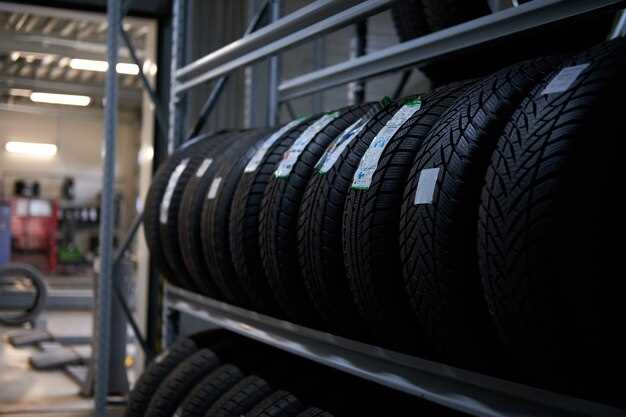
Understanding the distinctions between race tires and street tires is crucial for anyone interested in high-performance driving or everyday commuting. While both types of tires serve the fundamental purpose of providing traction, their designs, compounds, and performance characteristics are worlds apart. The primary factor that differentiates them is the level of grip they offer. Race tires are engineered to deliver maximum grip under extreme conditions, whereas street tires prioritize longevity and comfort.
Race tires are crafted from specialized rubber compounds that enhance grip on the track. These compounds are often softer, allowing for better contact with the road surface, which translates to superior handling and quicker lap times. In contrast, street tires utilize harder compounds that provide a balance between grip and tread wear, making them suitable for everyday driving conditions. This difference in composition directly affects the tires’ performance in terms of traction, heat dissipation, and responsiveness.
Another critical aspect to consider is the tread design. Race tires typically feature slick surfaces or minimal tread patterns that maximize contact with the pavement, optimizing adhesion in dry conditions. Conversely, street tires are designed with more intricate tread patterns to enhance water drainage and prevent hydroplaning, ensuring safety in varying weather conditions. These characteristics demonstrate the tailored approach tire manufacturers take when developing products for specific driving environments.
Understanding Grip Characteristics of Race Tires vs. Street Tires

Grip is a critical factor that directly influences the performance of both racing and street tires. Racing tires are specifically designed to achieve maximum grip on the track. They utilize a soft rubber compound that offers enhanced traction, particularly in the warmer conditions typical of racetracks. The stickier surface of racing tires allows for better handling and stability during high-speed cornering, enabling drivers to push their vehicles to the limit without losing control.
On the other hand, street tires are formulated with a more durable rubber compound that balances grip with longevity. While they provide adequate traction for everyday driving conditions, their grip does not match the aggressive performance levels of racing tires. Street tires focus on versatility and comfort, catering to a wide range of conditions, from wet to dry surfaces, which means they are often harder and less sticky compared to racing counterparts.
Additionally, the tread pattern plays a significant role in grip characteristics. Racing tires typically feature minimal or no tread to maximize contact with the road, allowing for optimal grip. In contrast, street tires have more intricate tread designs to enhance water displacement and reduce hydroplaning, which can compromise grip in adverse weather conditions.
In summary, while both tire types are engineered to perform effectively, racing tires prioritize maximum grip and performance over durability, whereas street tires offer a balanced approach, ensuring safety and comfort for daily use.
Analyzing Wear Rates and Longevity in Racing and Street Tire Applications
The wear rates and longevity of tires are crucial factors that significantly differ between racing and street applications. Racing tires are designed to provide maximum grip under high-performance conditions, which often results in increased wear compared to traditional street tires. The compounds used in racing tires prioritize traction and responsiveness, leading to a faster degradation of the tire material when exposed to extreme temperatures and stress levels during competitive driving.
In contrast, street tires are engineered for durability and extended life under a variety of driving conditions. The rubber compounds utilized in these tires are formulated to balance grip and longevity, allowing them to withstand daily wear while offering sufficient traction for everyday driving scenarios. Consequently, the tread patterns and designs of street tires focus on dispersing heat and providing a longer lifespan without sacrificing too much performance.
The racing environment, characterized by high speeds and aggressive maneuvers, accelerates the wear process significantly. As a result, racers must frequently monitor tire wear and replace their tires to maintain optimal grip and safety on the track. On the other hand, street tire users can expect a longer lifespan, often ranging from 30,000 to 70,000 miles, depending on driving habits and road conditions.
Ultimately, the stark contrast in wear rates between racing and street tires is a reflection of their intended use. For racing enthusiasts seeking peak performance, the faster wear of racing tires is an acceptable trade-off for enhanced grip and control. Conversely, for everyday drivers, the longevity and reliability of street tires are paramount, making them a more practical choice for regular use.
Exploring Temperature Management and Performance Under Different Conditions

Temperature management plays a crucial role in the performance of both race tires and street tires, influencing traction, wear, and overall handling characteristics. Racing tires are specifically engineered to operate optimally at higher temperatures, which enhances their grip on the track. The rubber compounds used in these tires are designed to achieve a specific temperature range quickly, allowing for maximum performance during competitive driving.
In contrast, street tires are constructed with a different focus, prioritizing longevity and comfort over peak performance. These tires typically require more time to reach their optimal operating temperature, making them less effective during sudden driving situations or competitive events. The rubber compounds in street tires are formulated to provide a balance of performance and durability under a wide range of weather conditions and driving styles.
Under various environmental conditions, temperature management becomes even more significant. For instance, in cooler climates, racing tires may struggle to reach their optimal heat levels, leading to reduced grip and increased wear. To counter this, drivers may employ several strategies, such as warming up tires before events or utilizing tire blankets to maintain temperature. Conversely, in high-temperature environments, tires can overheat, causing them to lose grip and perform poorly. It is essential for racers to monitor tire temperature regularly and adjust their driving strategies accordingly, such as changing tire pressure or modifying driving patterns to prevent excess wear.
Ultimately, understanding temperature management allows drivers to optimize the performance of their tires, whether on the track or the street. Racing tires excel in specific conditions due to their design, while street tires offer versatility. The choice between them frequently depends on the driving environment and the intended use, highlighting the importance of understanding tire performance under varying thermal conditions.



